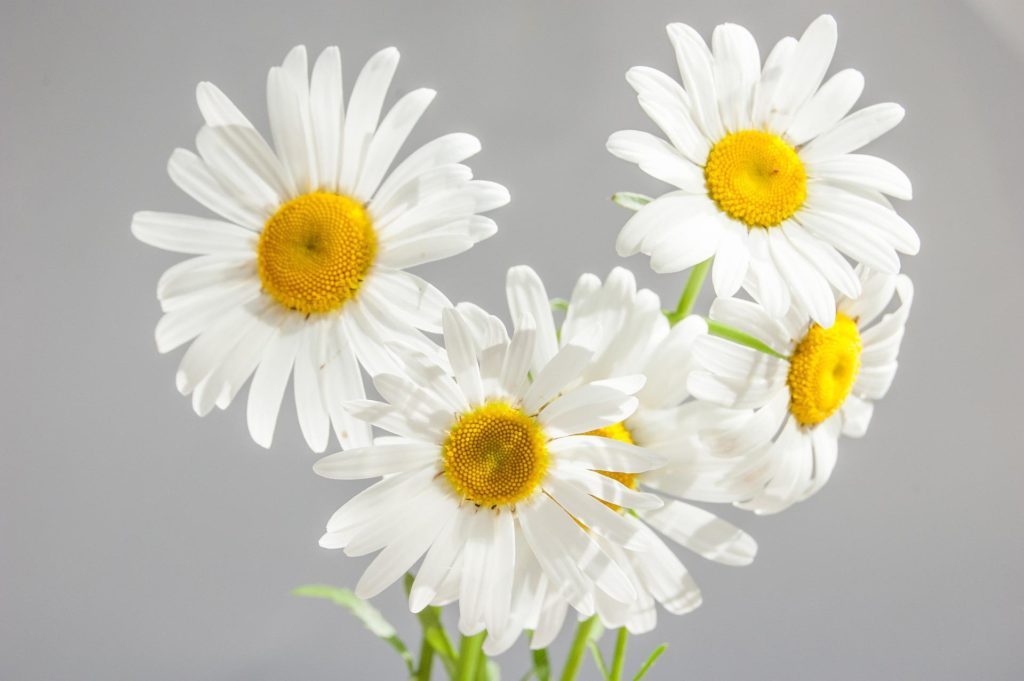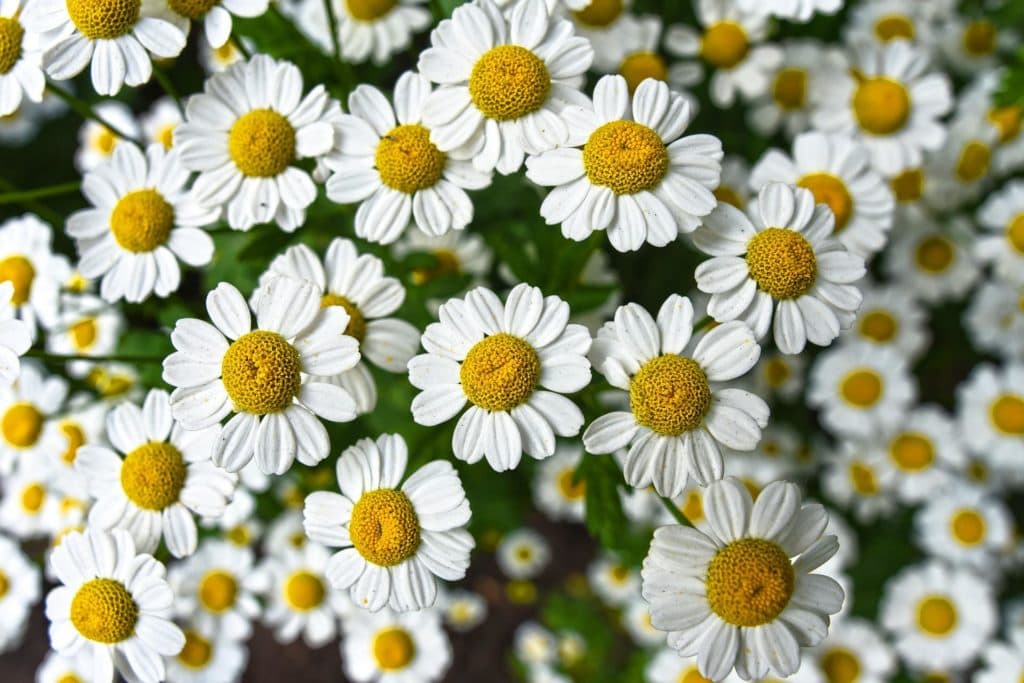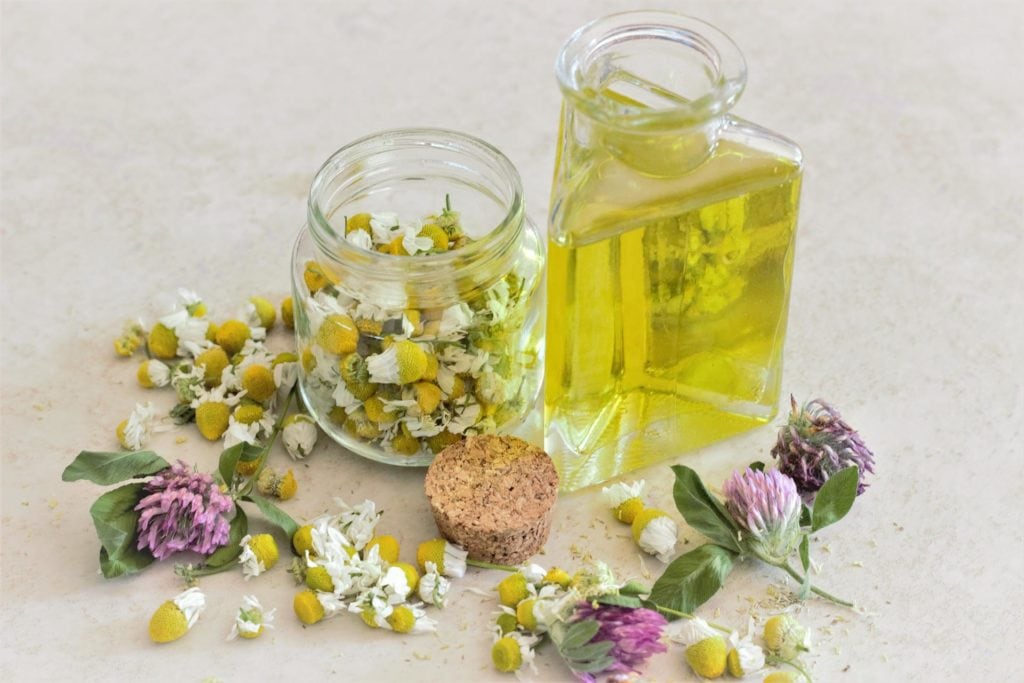How to Grow Chamomile Indoors: Tips, Tricks and Step-by-Step Guide
-
Pete Ortiz
- Last updated:

Have you ever enjoyed some chamomile tea and desired to grow the herb at home? Well, whether you have ample space or not, it’s possible to grow chamomile indoors in a container indoors.
While it’s easy to grow from seed, you can also propagate it. After the plant matures, you can harvest the flowers as many times as possible and dry and use them afterward.
Growing chamomile indoors requires some care and maintenance. This herb loves bright light and moist soil. In this guide, you can learn all the tips and ways to grow chamomile successfully.
 Best Chamomile Varieties to Plant in Containers Indoors
Best Chamomile Varieties to Plant in Containers Indoors
There are different varieties of chamomile seeds available. However, when you want to plant some indoors, the best seeds to grow include:
- German Chamomile: The German chamomile is readily available and popular with many growers. It’s easy to grow. However, note that this is an annual plant that will die once winter starts. Even when growing indoors, you can’t continue getting blooms when the cold weather sets in.
- Roman Chamomile: Across the world, many people are fond of growing the Roman Chamomile. This is the ideal variety when you want to grow the herb indoors. Some of its best features are the fact that it spreads quickly horizontally. It’s a perennial herb that you can grow all year.
Step-by-Step Guide to Grow Chamomile Indoors
There are many benefits of having some chamomile growing at home. Not only do the blooms look amazing, but the plant also has exceptional medicinal benefits. Below is a description of how to go about growing chamomile indoors.
1. Gather the Soil and Pots
Preparation is key when growing chamomile indoors. Of course, you need a growing medium and somewhere to grow the herb. Therefore, start by gathering rich soil to plant the seeds in and the right containers for the job.
The ideal containers for chamomile need to be wide enough to accommodate the crop. Once chamomile germinates, it spreads fast and requires extra room. The container should have some drainage holes to get rid of excess moisture.
As for a growing medium, you need a good potting mix that will allow proper water drainage to prevent any excess moisture in the container. A good example is a perlite mix, which retains only the right amount of moisture in the soil. Not only does the soil drain well, but it allows proper aeration and root penetration.
2. Plant the Chamomile Seeds
If you want to plant chamomile seeds, get one large container and add the soil that you’ll use to germinate the chamomile seeds. Sow the seeds directly into the soil, ensuring you leave about an inch of space between each of them.
Use your finger to press the seeds into the soil gently. Alternatively, you can use a small stick to poke small holes in the soil. After sowing the chamomile seeds, apply some light soil on top to cover them.
Place the container somewhere with lots of bright, indirect light. Water the seeds gently and leave them to germinate. The chamomile seeds will start to germinate in 14 days or less.

3. Thin or Transplant the Seedlings
When the chamomile germinates, you can thin them out to give the plant ample room to grow. At about 3 inches tall, the seedlings will start to grow buds. This means it’s almost time for them to start flowering.
Thinning gives the remaining chamomile seedlings ample room to grow. However, you can now transplant the seedlings into other pots. That way, you don’t waste any seedlings and have lots of chamomile growing indoors.
As beneficial as chamomile is at home, note that it’s toxic to pets. Therefore, it’s better to place the pots somewhere out of reach. Cats and dogs that ingest the plant can develop intestinal distress, nausea, and vomiting.
Care and Maintenance for Growing Chamomile Indoors
Proper care and maintenance will provide you with the best blooms, so you must give your indoor chamomile the conditions needed for healthy growth.
Proper Watering
Water is essential for life, and this is true for plants as well as animals. Chamomiles love moist soil, so it’s important to have a watering schedule to keep the soil from drying out. If the soil dries up, the herbs will die within a short period. Underwatering them can also lead to wilting.
Remember that too much of anything is poisonous. Chamomiles love moist soil but not so much that it is overly wet. Too much water will cause issues, such as root and stem rot. Therefore, water the herb with the right amount of water and plan on the right time to do so.
If the herb goes dormant, you can stop watering until spring when it comes alive. Also, remember to check that water is draining from the drainage holes on the pot.
Bright Light and Ideal Temperature
A south-facing window is the best place to grow chamomile. Here, the herb gets lots of direct light that it needs to bloom. Medium to low light can lead to issues like stunted growth and weak blossoms, so ample light is a necessity when caring for chamomile.
On top of that, ensure the bright light isn’t direct. Harsh sun rays can burn the plant. Keep an eye on the temperature in the house. Chamomile plants are hardy and can survive a light frost outside. However, continuous cold temperatures can have a negative effect on the plant indoors. The best option is to maintain an adequate room temperature that the herb will enjoy.

Fertilizer
Growing any plants in a container means you have to keep feeding them for proper growth. This is true even for chamomile. Feed the plants during the growing and flowering stages for the best yield.
You can use a slow-release fertilizer or the type that dissolves in water. Check the instructions to know how to mix water and organic fertilizer and apply it to your plants.
Regular Pruning
Pruning is essential not only to chamomile but to numerous other herbs. If you want the plant to keep producing more leaves, you have to prune it.
The best time to prune chamomile is after you get a flush of flowers. This usually happens after 4 weeks when the plant is still small and needs to produce more leaves. Cut the flowers and prune both the leaves and the stem.
Cutting back the leaves and stems discourages the growth of weak, leggy ones that can’t support mature flowers. This will force the plant to keep growing as it works towards producing new flowers.
The 6 Tips to Growing the Best Chamomile Indoors
1. Pick the Right Type
The choice for indoor growers is often between Roman and German chamomile. If you want a crop that you can keep around for some time, Roman is the best. It’s a perennial and even takes a shorter duration to grow. However, the German chamomile is an annual plant and suitable if you want to grow it for only a year.
2. Prune Growing Seedlings
Roman chamomile spreads fast horizontally since it’s a short herb. However, you might soon find yourself facing an overcrowding issue. The best thing to do as the herb grows is to thin out the seedlings. Ensure there’s ample space between them for better growth and flowering.

3. Get a Moisture Meter
Chamomile doesn’t like dry conditions, and it only thrives in moist soil. If you notice the soil is dry, you have to water the herb immediately. However, it can sometimes be hard to tell if the soil is moist or not. This is why it’s better to invest in a moisture meter that you can stick directly into the soil.
4. Cut Back Flowers to Grow More Leaves
The first bloom of flowers happens when the plants are still small. At this time, the stems are weak, and the plant needs to add more leaves to grow bigger. Instead of leaving the plant as it is, get some pruning shears and cut back the flowers. That way, the chamomile stems can continue to grow and add more leaves.
5. Check Soil Drainage
Moist soil is different from wetness. If there’s too much water in the soil, this can cause big issues, such as root and stem rot. So, as you water your plants, ensure the drainage holes work. Also, grow chamomile in well-draining soil that won’t retain too much moisture.
6. Pick a South-Facing Window
Find a spot in the house with a south-facing window. Here, chamomile can enjoy lots of bright and indirect light for most of the day.
Common Chamomile Pests and Diseases
Growing plants in containers requires regular inspections to ensure no pests attack them. Chamomile is susceptible to attacks from various insects, such as:
- Mealybugs
- Aphids
- Spider Mites
- Soft Scale
Any of these can lead to an insect infestation that devastates your herbs. The insects tend to multiply fast, attacking even other plants growing nearby. So, the best thing to do is spray an organic insecticide as soon as you spot any of them.
In terms of diseases, there are some that can infect chamomile growing indoors. Two diseases to be on the lookout for are:
1. Powdery Milde
This is a white fungus that covers the entire chamomile plant. When this happens, the light won’t penetrate the plants, and it also steals nutrients from the herb. All the leaves will turn yellow, and the plant will die if not taken care of.
2. Botrytis Blight
Another fungal disease that infects chamomile is Botrytis blight. It’s common where there’s lots of moisture. It causes brown and yellow spots on the herb. Prevention is important when growing chamomile as this disease can decimate your plants.
How to Harvest Chamomile Flowers
Chamomile has many uses at home. You can grow it for medicinal purposes or to prepare it as tea. When chamomile matures, it’s time to harvest the flowers.
Harvesting chamomile starts when the plant is in full bloom. What you need is the lovely white and yellow flowers from each plant.
Use your fingers to pinch the stem just below the flower. Remove all the flowers from the growing chamomile plants.
After you finish harvesting, take a paper towel and place it on a dry and flat area. Arrange the flower petals on the paper towel to dry. It can take up to 14 days for the chamomile flowers to dry and be ready for use at home.
If this drying method seems too long, there is another option. Purchase a dehydrator and use it to dry the flowers that you harvest. The dry chamomile flowers can last for some time when you store them in a glass jar with a lid. The flavor remains intense for up to 6 months.
 Conclusion
Conclusion
Growing chamomile indoors is simple when you grow it from a seed. This herb loves bright light, moist soil, rich nutrients, and room-temperature environments. As it grows, be on the lookout for pests and diseases that can attack it.
Chamomile is ready to harvest when you see a lot of healthy white and yellow flowers. Harvesting is easy to do since you only have to pluck the flowers. After that, dry them for 2 weeks or use a dehydrator and store them until you’re ready to make something delicious.
Featured Image Credit: Pixabay
Contents

 Best Chamomile Varieties to Plant in Containers Indoors
Best Chamomile Varieties to Plant in Containers Indoors